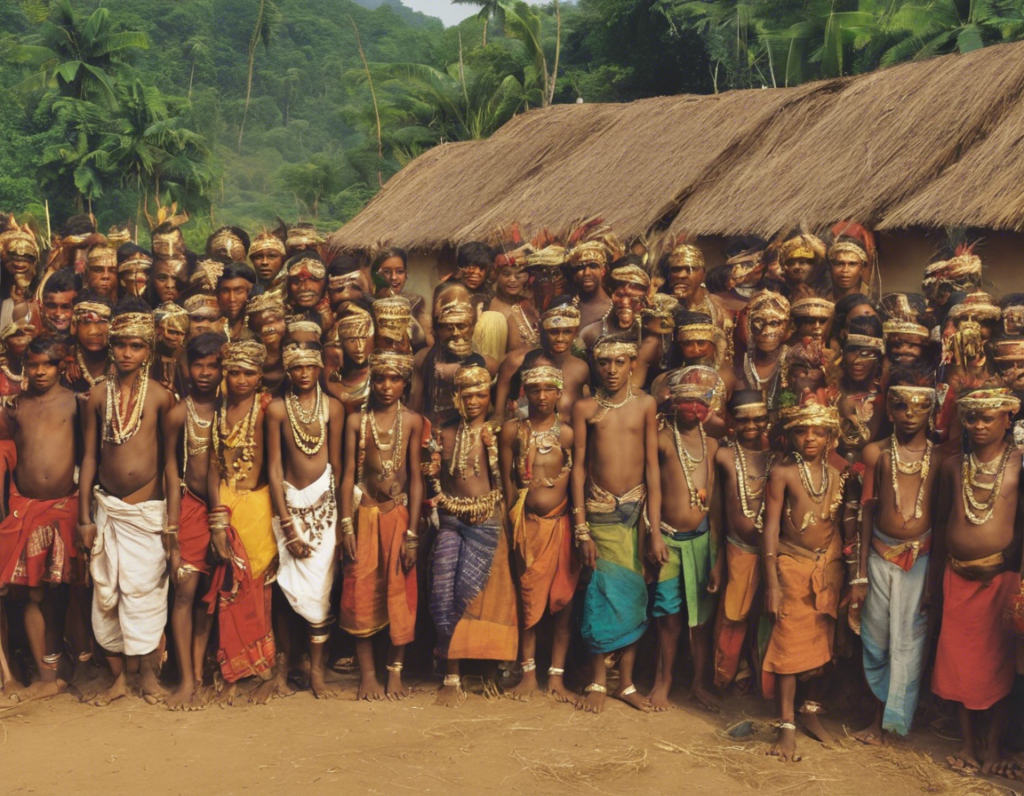Introduction
Dikus and Tribals, terms used in the Indian subcontinent to refer to outsiders and indigenous people, often carry heavy connotations rooted in colonial history. The interplay of these two groups and their representation in literature, particularly in the context of a golden age vision, offers a rich landscape for exploration.
The Colonial Legacy
Colonial encounters shaped the perceptions of Dikus and Tribals in Indian society. British colonialism developed a narrative that positioned Tribals as “noble savages” living in harmony with nature, untouched by the corruption of modernity. Dikus, on the other hand, were often portrayed as exploitative intruders, seeking to subjugate and exploit the land and its people. These representations informed a dichotomous view that persisted long after colonial rule ended.
Golden Age Vision
The notion of a golden age often features prominently in discussions surrounding Dikus and Tribals. This vision encompasses a romanticized past where harmony reigned, and societal divisions were non-existent. It envisions a time when Dikus and Tribals coexisted peacefully, each contributing their unique perspectives and skills to a shared utopian existence.
Literary Representations
Literature has played a pivotal role in shaping and challenging the golden age vision of Dikus and Tribals. Writers such as Ruskin Bond, Mahasweta Devi, and Arundhati Roy have delved into the complexities of these relationships, offering nuanced portrayals that highlight the nuances and contradictions inherent in such interactions.
Ruskin Bond’s stories often explore the bond between Dikus and Tribals, showcasing moments of understanding, empathy, and shared humanity. Through his characters, Bond emphasizes the importance of looking beyond superficial differences to find common ground.
Mahasweta Devi’s work, on the other hand, delves deep into the harsh realities of tribal life and their struggles against exploitative forces. Her narratives disrupt the golden age vision, forcing readers to confront the injustices faced by indigenous communities and the resilience required to navigate a hostile world.
Arundhati Roy’s writings blend elements of fantasy and reality to create worlds where Dikus and Tribals intersect in unexpected ways. Through her vivid imagery and incisive commentary, Roy challenges readers to question their assumptions and reconsider simplistic narratives of coexistence.
Challenges and Opportunities
While the golden age vision offers a tantalizing glimpse into a harmonious past, it also raises important questions about power, privilege, and representation. The romanticization of Dikus and Tribals can obscure the complexities of their interactions, glossing over histories of inequality and violence. By interrogating these narratives, writers have the opportunity to craft more authentic and inclusive portrayals that reflect the diverse experiences of all communities.
Conclusion
The exploration of Dikus and Tribals in literature through the lens of a golden age vision reveals the enduring power of storytelling to shape our understanding of the world. By interrogating existing narratives, authors can challenge stereotypes, highlight injustices, and offer new perspectives on the complexities of human relationships. As we continue to grapple with the legacies of colonialism and strive for a more equitable future, these literary representations serve as crucial touchstones for reflection and dialogue.
Frequently Asked Questions (FAQs)
1. What is the origin of the term “Dikus”?
The term “Dikus” originated from the indigenous tribes of India to refer to outsiders or foreigners who were seen as intruders or exploiters of their land and resources.
2. How do literary representations of Tribals challenge stereotypes?
Literary representations of Tribals often challenge stereotypes by portraying them as multifaceted individuals with complex histories, cultures, and identities, moving beyond one-dimensional portrayals of noble savages or primitive beings.
3. What are some common themes explored in the interactions between Dikus and Tribals in literature?
Themes such as power dynamics, cultural clashes, environmental degradation, colonial legacies, and resistance movements are commonly explored in literature depicting the interactions between Dikus and Tribals.
4. How do authors like Mahasweta Devi contribute to the discourse on tribal rights and social justice?
Authors like Mahasweta Devi use their literary works to bring attention to issues of tribal rights, social justice, and exploitation, shedding light on the marginalization and struggles faced by indigenous communities.
5. In what ways can literature help in bridging the gap between Dikus and Tribals in contemporary society?
Literature can help bridge the gap between Dikus and Tribals by fostering empathy, understanding, and dialogue between different communities, challenging stereotypes, and promoting social cohesion and solidarity.
